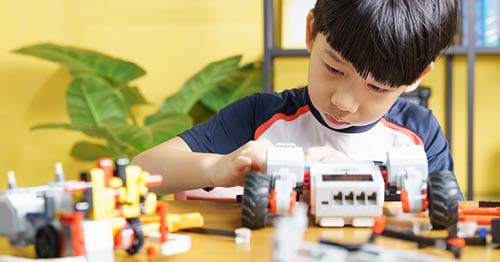How to Conquer Social Anxiety in K–12 School Children
by Alyssa Austin
byAlyssa Austin
4 min to readSitting still for long periods of time isn’t easy, especially for students. If your child gets restless during lessons and starts tapping their foot or twirling a pencil, suggesting that they sit still probably won’t help. Instead, it’s time to take a break and get moving!
Taking breaks and staying active is important for creating a healthy, productive school week. Physical activity clears the mind, relieves grogginess and tension, and encourages relaxation. It’s especially important for students who prefer to be active or, as psychologist Howard Gardner theorized, have outstanding “kinesthetic intelligence.”
Kinesthetic intelligence, which can also be referred to as “body smarts,” is a way of processing and conveying information in which the individual feels most comfortable using the body or hands. Body smarts are most often expressed in “specific physical skills such as coordination, balance, dexterity, strength, flexibility, and speed,” according to Paradigm Education Solutions.
Students who excel in “body smarts” process information best through touch and movement. A “body smart” child might seem to be in constant motion—tapping a foot, stretching their arms, or moving their shoulders and neck while reading or typing. These students may favor activities such as team or individual sports, martial arts, playing a musical instrument, or acting and dancing.
Students with strong body smarts often show good fine motor skills and hand-eye coordination, which is evident in activities such as writing by hand, working with clay, and playing catch. They also show good gross motor skills, which involve the large muscle groups that control walking, running, and sitting and standing well. These traits show in a person’s agility, balance, athleticism, and body control.
Even if your child doesn’t gravitate toward hands-on or physical activities, you should still incorporate them into their routine. Learning to use a variety of methods can keep children interested and hone both their physical and mental skills.
Kinesthetic learning for kids offers many unique benefits that can help with growth and development. According to the National Math Foundation, kinesthetic learning activities are known to:
Looking for ways to get your child moving throughout the day? Use the resources below to find new bodily kinesthetic activities to exercise the body as well as the brain.

Another way for your child to get active and tap into the benefits of bodily kinesthetic activities is to join a Connections Academy club. Some of the online school clubs that appeal to kinesthetic learners include:
Once you make your child’s school schedule more active, consider building their word smarts, self-smarts, or another one of Gardner’s multiple intelligences.
by Alyssa Austin
by Elizabeth Preston
by Alyssa Austin
